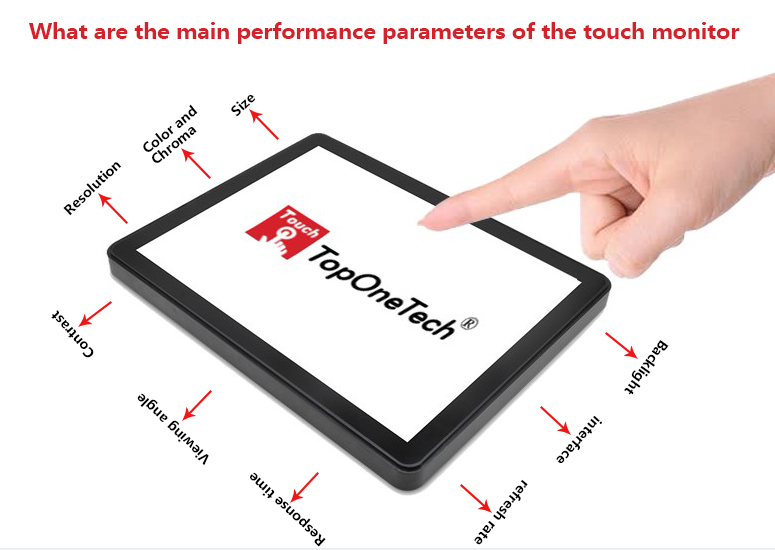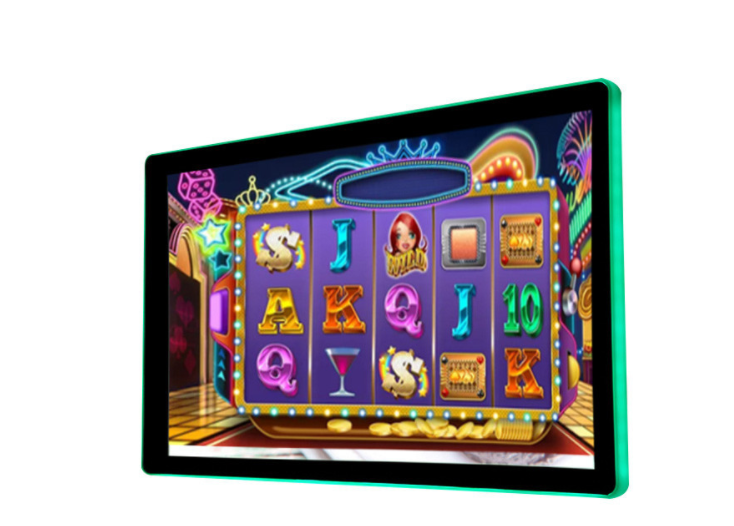In daily life, touch monitors can be said to be ubiquitous. It is the mainstream of today's display industry and has a wide range of applications. Many terminal products use touch monitors as output devices. Since the touch screen is so important, how much do friends know about it? Today Top One Tech continues to introduce the performance parameters of the touch monitor to friends.

1. Size
The size of the touch display refers to the diagonal size of the screen. The active area of the touch monitor is smaller than the overall area of the touch monitor. Usually the size is measured by the length of the diagonal, in inches (1 inch = 2.54cm).
2. Color and chroma
In terms of color and chroma, touch monitors are very rich in chroma gradation. TFT-LCD mainly has 16-bit 64K colors and 24-bit 16M colors, with high brightness, high contrast, and very bright colors.
3. Resolution
The resolution is actually how many pixels there are in each row and column on the screen, which is represented by the matrix determinant, and each pixel can be accessed by the computer individually. The resolution of the touch display is set and specified by the manufacturer and cannot be changed arbitrarily.
4. Brightness
Brightness is also a key performance parameter for touch displays. Brightness, also known as lightness, indicates how bright or dark a color is. The unit of brightness is candela/square meter (cd/m2), and brightness is the human perception of the intensity of light. Brightness determines whether the display is bright or dim.
5. Contrast
Contrast refers to the measurement of different brightness levels between the brightest white and the darkest black in the light and dark areas of an image. The larger the difference range, the greater the contrast, and the smaller the difference range, the smaller the contrast. Like brightness, it can only be recognized by the naked eye. The greater the contrast of the touch screen, the brighter and richer the colors displayed. However, the brightness and contrast are not the bigger the better. It needs to be adjusted according to the actual application scene, so that the image and color can be truly restored.

6. Viewing angle
The viewing angle refers to the angle from which the user can clearly observe all the content on the screen from different directions. The viewing angle determines the size of the user's visible range and the best viewing angle. The larger the viewing angle, the better, if it is too small, the picture the user sees will be distorted. The best visual effect can be achieved by viewing from the front.
7. Response time
The response time of the touch display refers to the speed at which each pixel of the touch display responds to the input signal, that is, the time it takes for a pixel to change from dark to bright or from bright to dark. The response time of the touch monitor is in ms (milliseconds). The shorter the response time, the better, otherwise you will see smearing or a phenomenon called "ghosting".
8. Refresh rate
The refresh frequency is also called the field frequency, that is, the vertical scanning frequency of the display, which refers to the number of images that the display can display per second, and the unit is Hertz (Hz). The higher the refresh frequency, the less flicker of the image display and the higher the picture quality.
9. Interface
The interface of the touch monitor mainly includes VGA, DVI, HDMI, DP interface. These four display interfaces are ranked as DP > HDMI > DVI > VGA. The best display interface is DP, and the last one is VGA. VGA is an analog signal, and the other three interfaces are digital signals. VGA and DVI only support video transmission, not audio transmission, while HDMI and DP can transmit video and audio at the same time.
10. Backlight
Backlight is a form of lighting, mainly used on liquid crystal displays. The backlight is illuminated from the side or behind. The combination of reflective film, plastic frame, light guide plate, light bar, diffusion film and vinyl is called backlight, also called LED backlight.
Reflective film: plays the role of shading, and reflects the light from bottom to top through the light guide plate.
Light guide plate: Make the light evenly distributed on the light guide plate.
Diffuser Film: Evenly diffuses the light in the white area.
Vinyl: Protect the surrounding light and prevent light leakage.










